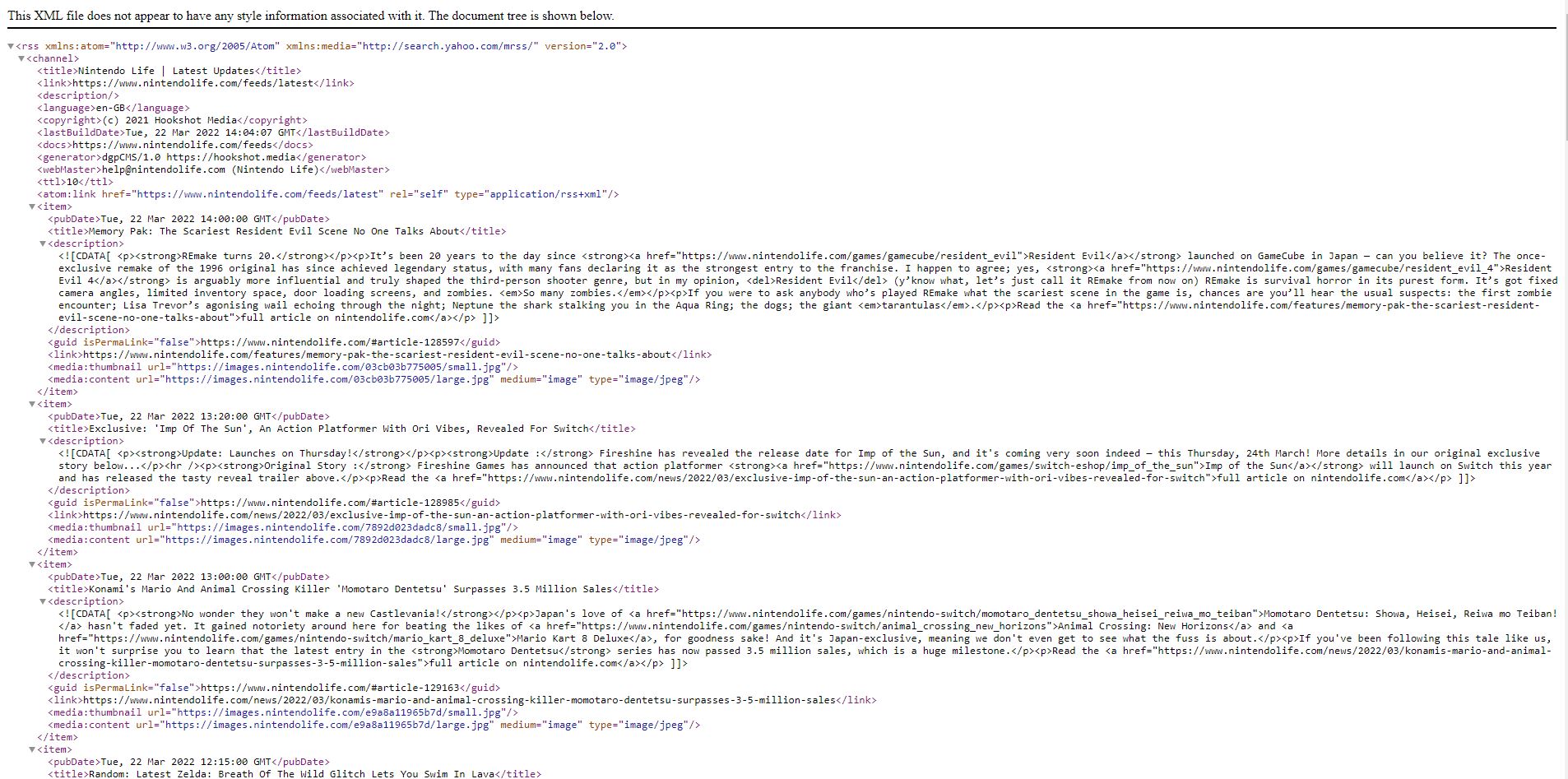Marrying Bitcoin and RSS

RSS (Really Simple Syndication) is older Internet technology that has been ‘killed’ many times by Big Tech but is still well and alive. RSS feeds are essentially a list of links published by websites adhering to a protocol such that applications can consume.
RSS readers are still used today but were more popular in the 2000s era. In the 2020s, attention is the top commodity online. Big Tech companies want users on their domains so they can shill them their ads and keep them engaged. RSS allowed users to consume content privately and ad-free without the noise.
On Big Tech’s path to this goal, they made sure to stifle RSS as all major social media companies (Twitter, Facebook, Instagram and Google) all previously supported (and subsequentially removed) that functionality from their platforms in the 2010s. Despite the lip service or non-sensical reasons provided for doing so, the writing was on the wall. Users being able to read content without ads and engaging privately cannot be monetized by those companies, so gutting RSS was necessary for the bottom line.
For example, Twitter now has a well gate-kept, permissioned API, whereas once upon a time, developers could simply query a public RSS endpoint of any users’ profile to get their latest tweets.
While these companies certainly had an agenda, the overarching reason for lack of RSS adoption in 2022 is the inability to monetize the technology. Website publishers do not make direct revenue from their feeds—fortunately upkeeping and syndicating them is very inexpensive. In the past, companies attempted to insert ads into the feeds themselves, but this is no different than visiting the site’s domain and being blitzed with ads anyway, still worsening the user experience.
Bitcoin as digital cash is a natural fit with RSS. However, due to its lack of adoption and misunderstanding of the tech, we have not seen attempts of integrating the two technologies.
Here are a couple of ways to potentially integrate:
RSS feed URLs are generally public, for example here.
Site publishers could only return an RSS feed via the HTTP request if it is suffixed with a transaction ID that pays the site some satoshi amount within a time frame, within the month in a subscription-like model.
Example: https://www.nintendolife.com/feeds/latest?txid=dcd308e24c1d82fa0d8b79f9cc3c1b7b1ab27d4bf07a428037b26e2cf14c79d9
The client application could be registered ahead of time with a known address or wallet, then the server could validate that transaction ID and determine whether to return a success 200 response or 404 Not Found- I mean 402, payment required response code.
Another way is to embed raw Bitcoin transactions that pay the site in the request itself—in either the IP packet (bringing back IP to IP transactions) or in the HTTP request. The site can first check the payment’s validity, then send to the network in truly peer-to-peer fashion. Once complete, the site sends the RSS feed to the client.
These are just a couple of ways to integrate micropayments into RSS such that sites have an incentive to add, maintain, advertise, and thus earn more from their content. As the truth about Bitcoin’s capability to be cheap, instant cash for the Internet emerges, I hope to see older, seemingly deprecated Internet technologies become useful again.
Watch: TonicPow’s Luke Rohenaz talks micropayments, NFTs & the future of digital marketing on Hashing It Out
Source: Read Full Article

